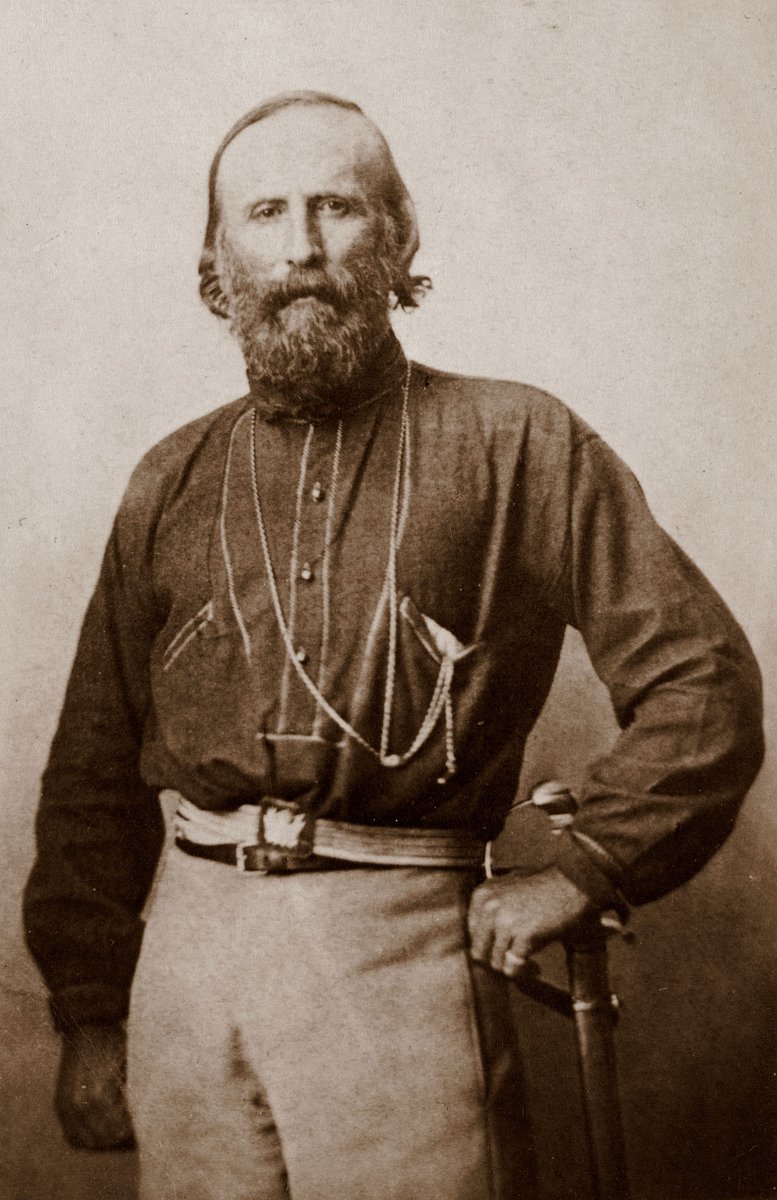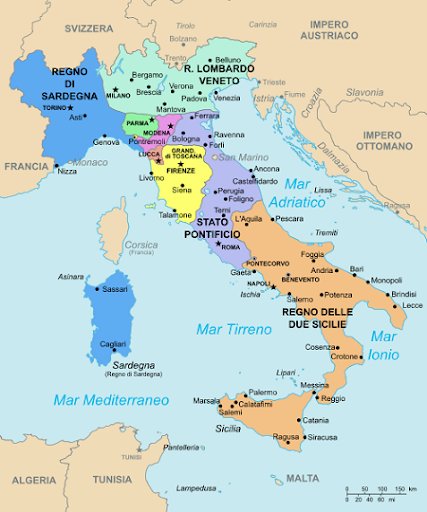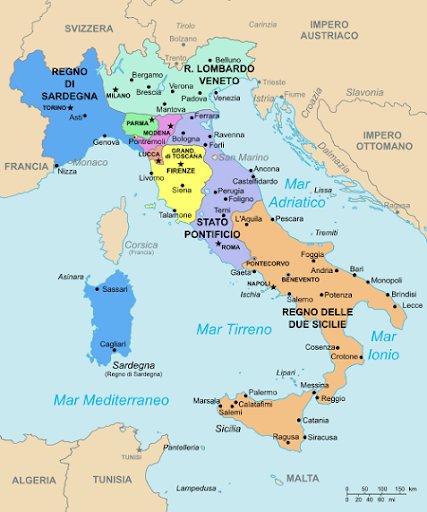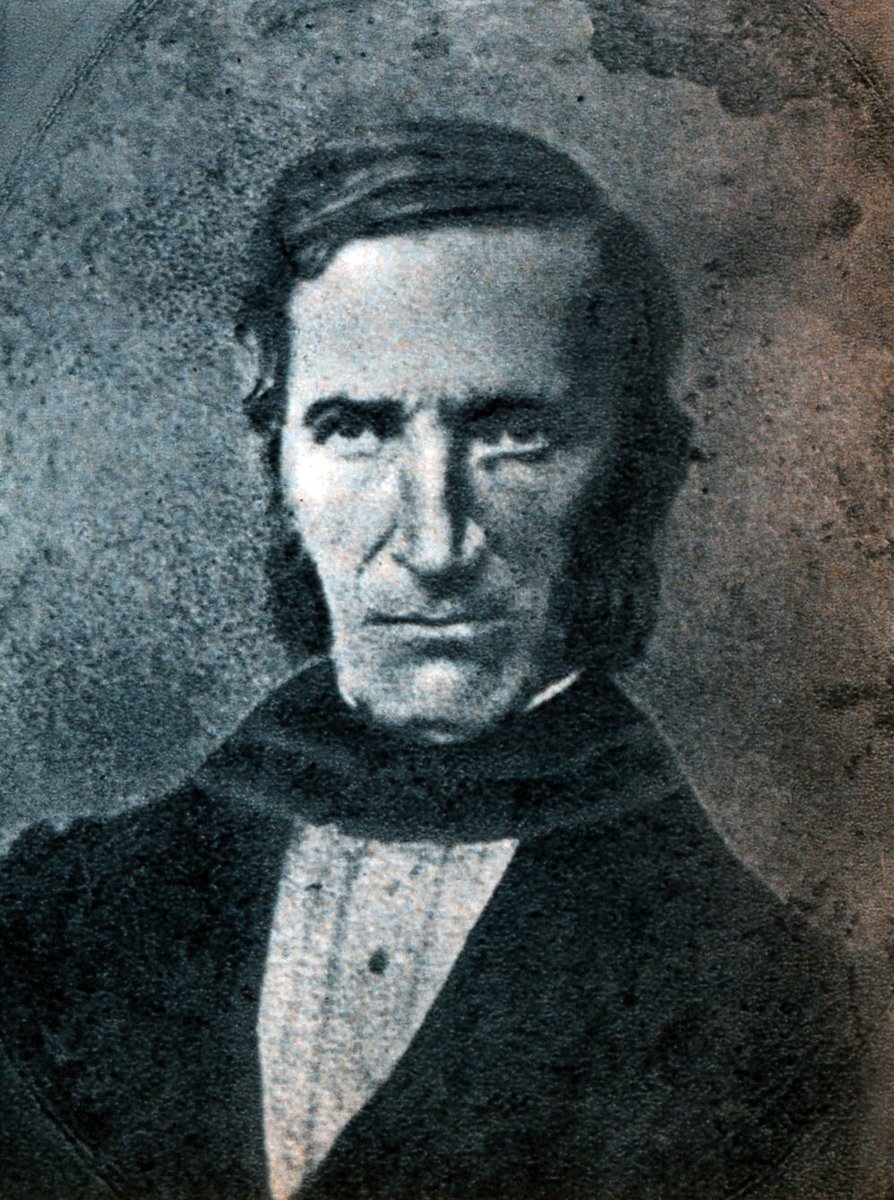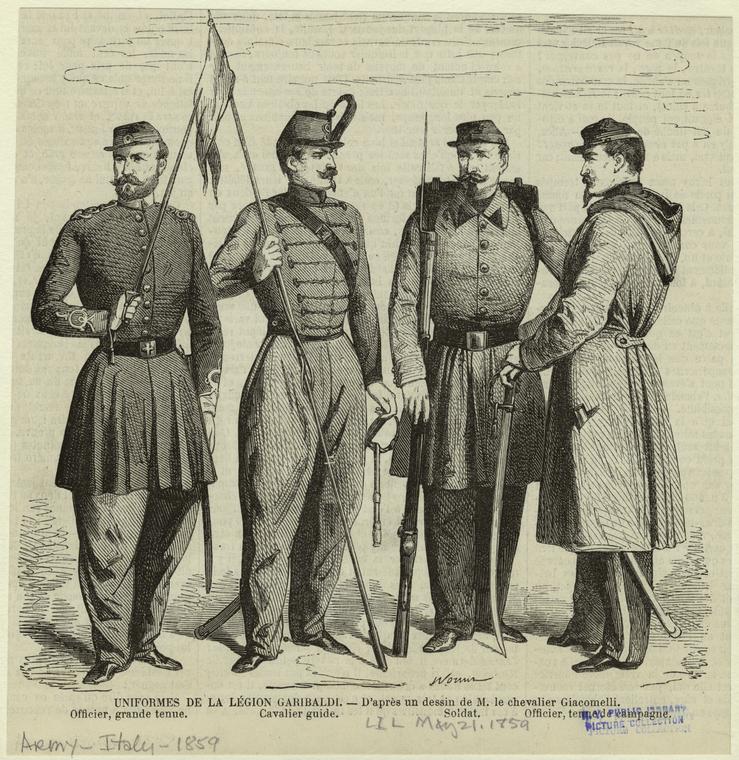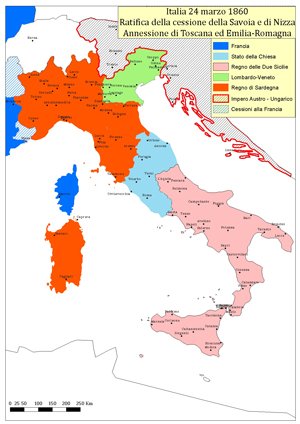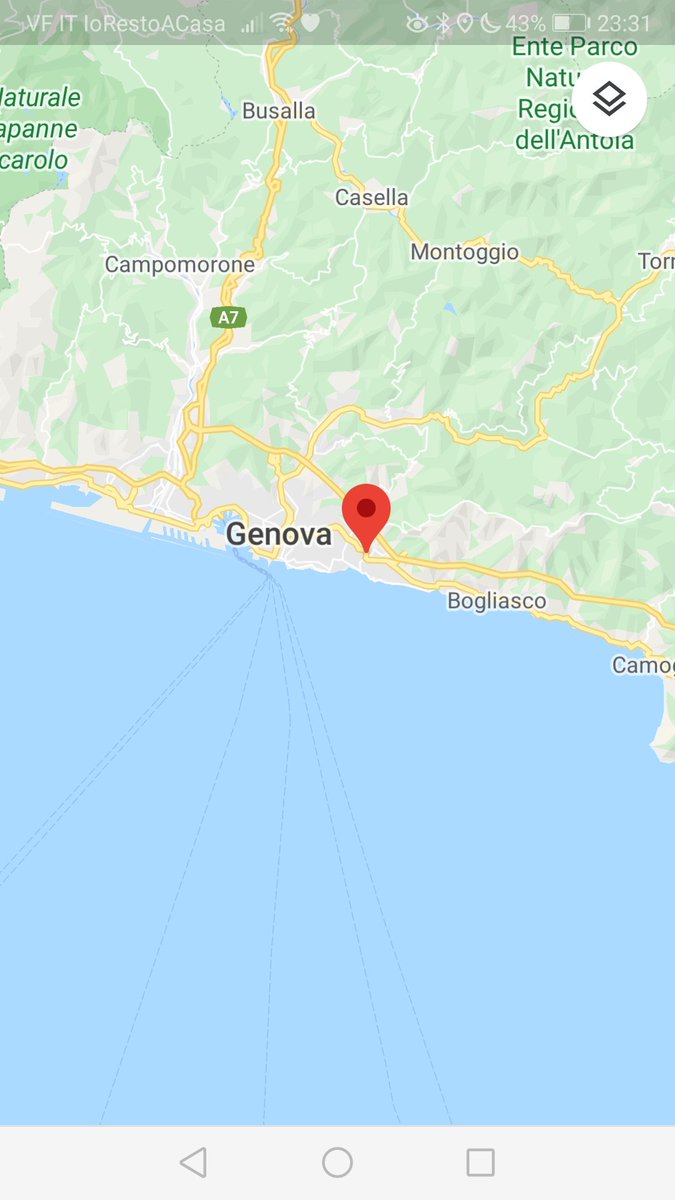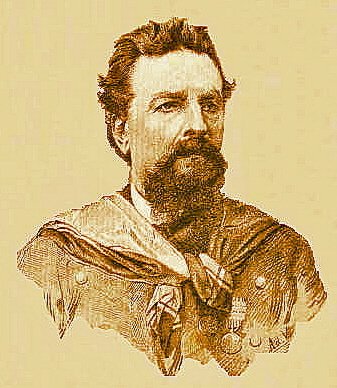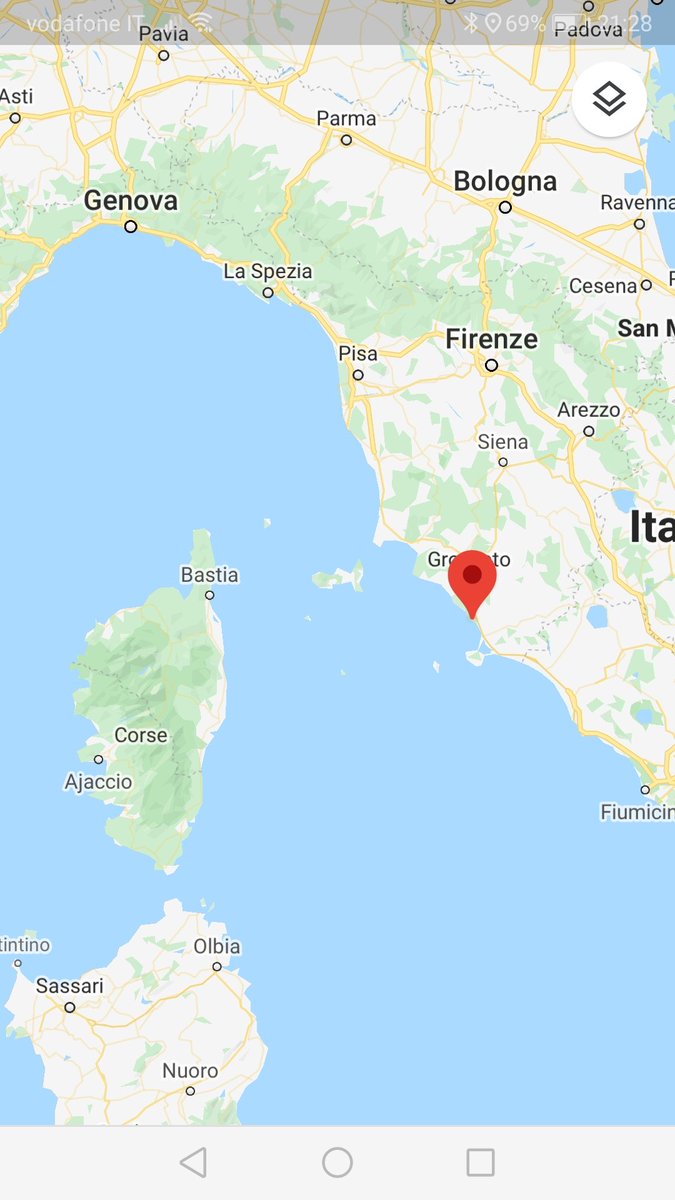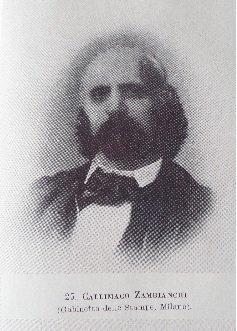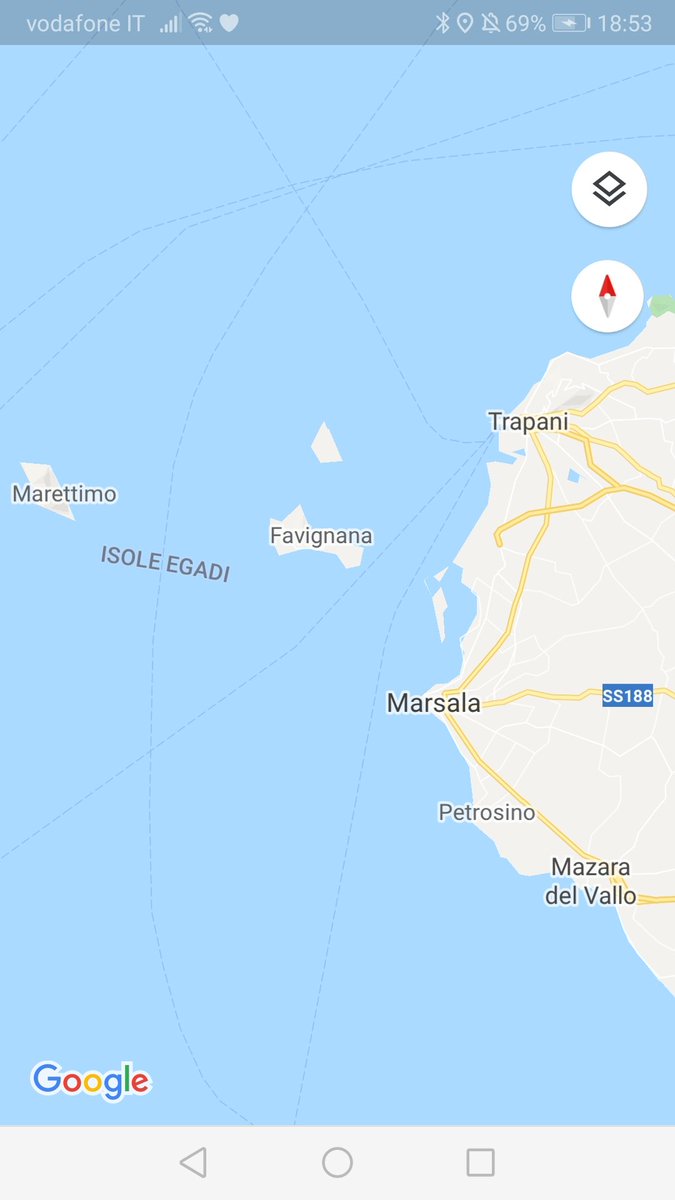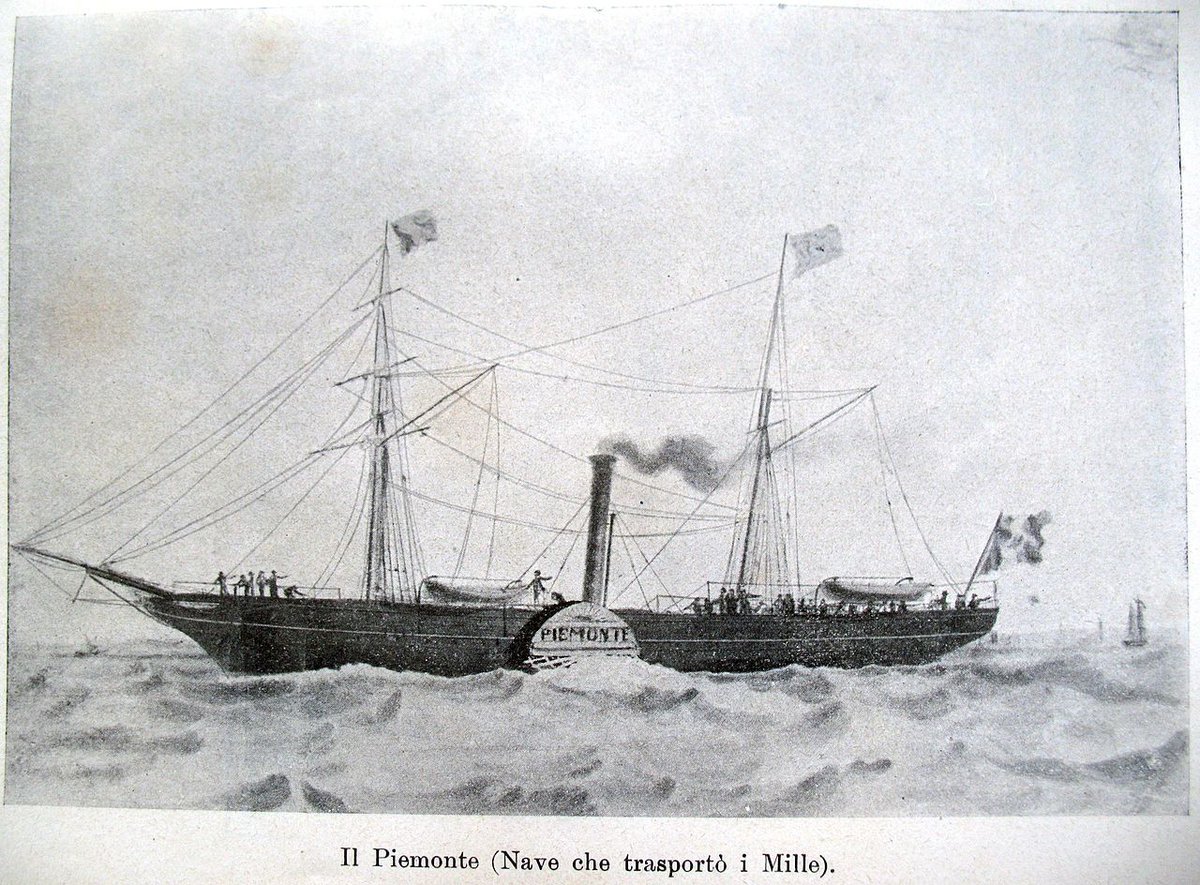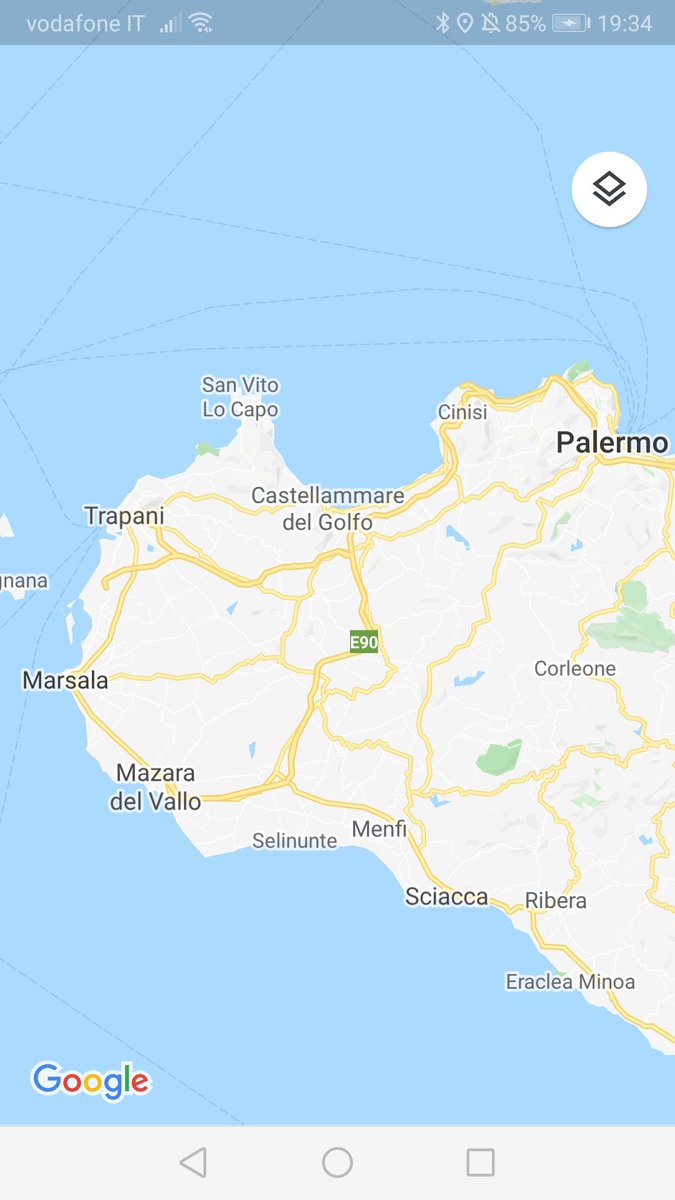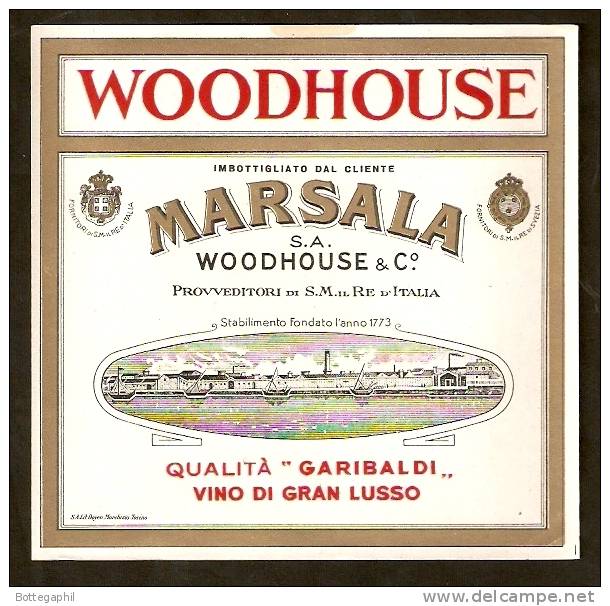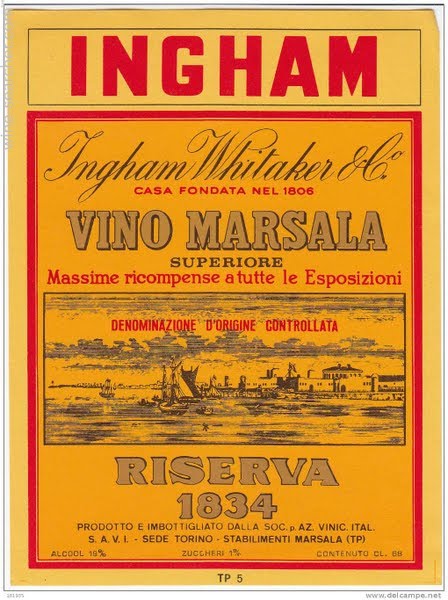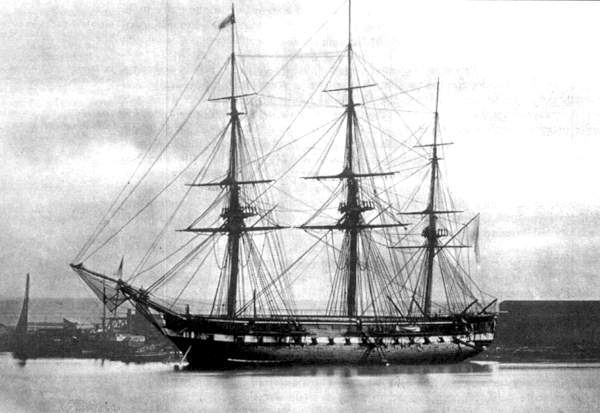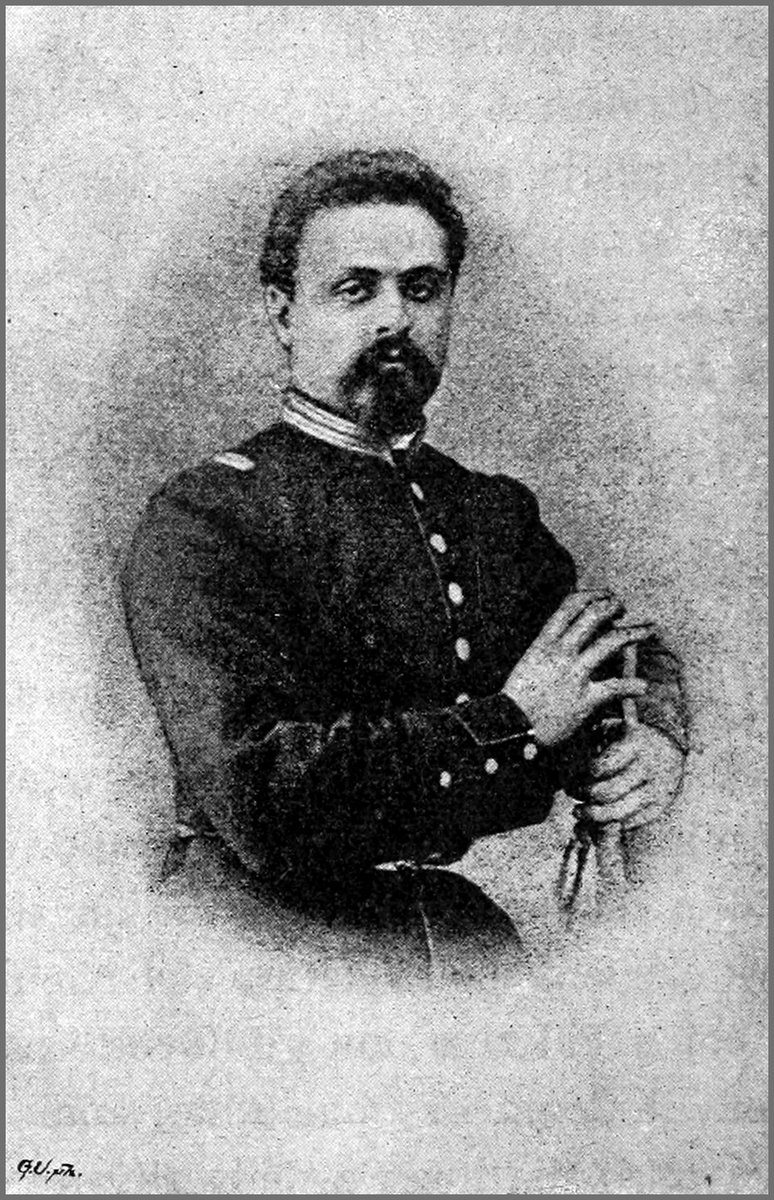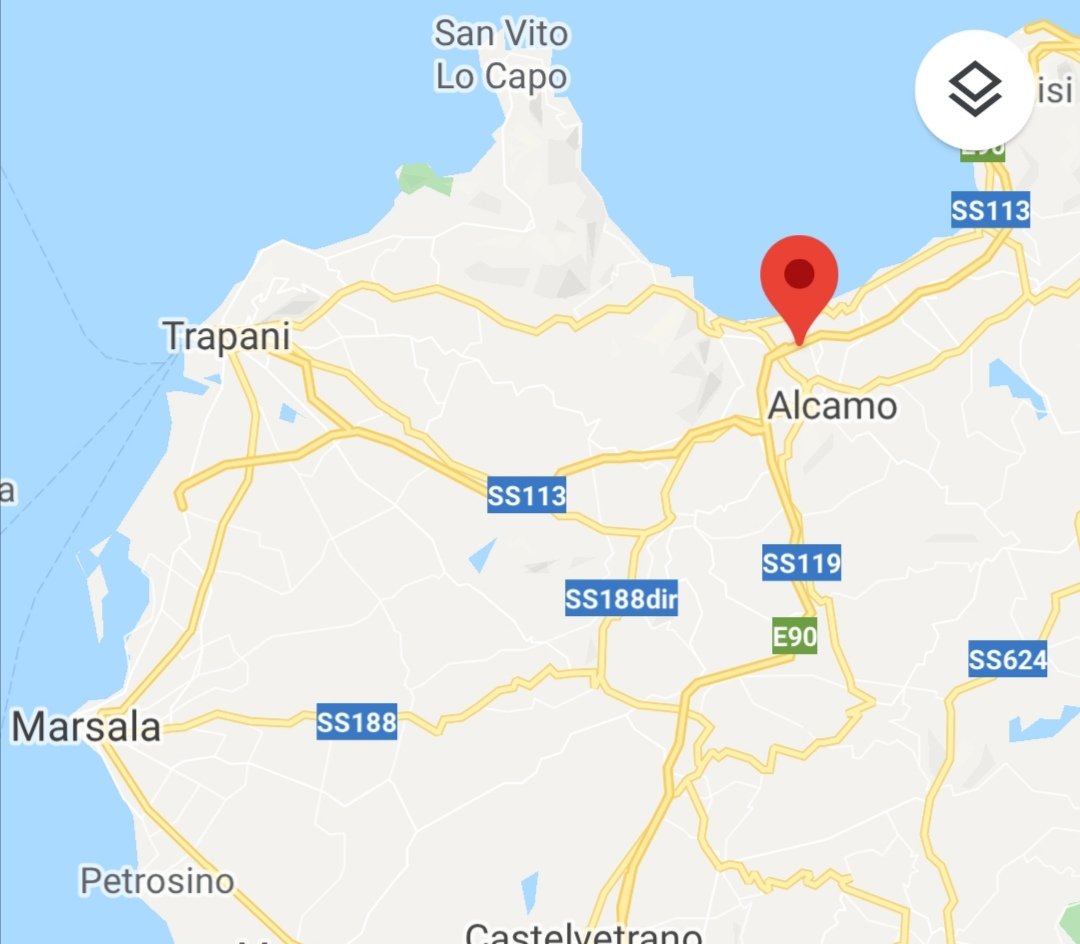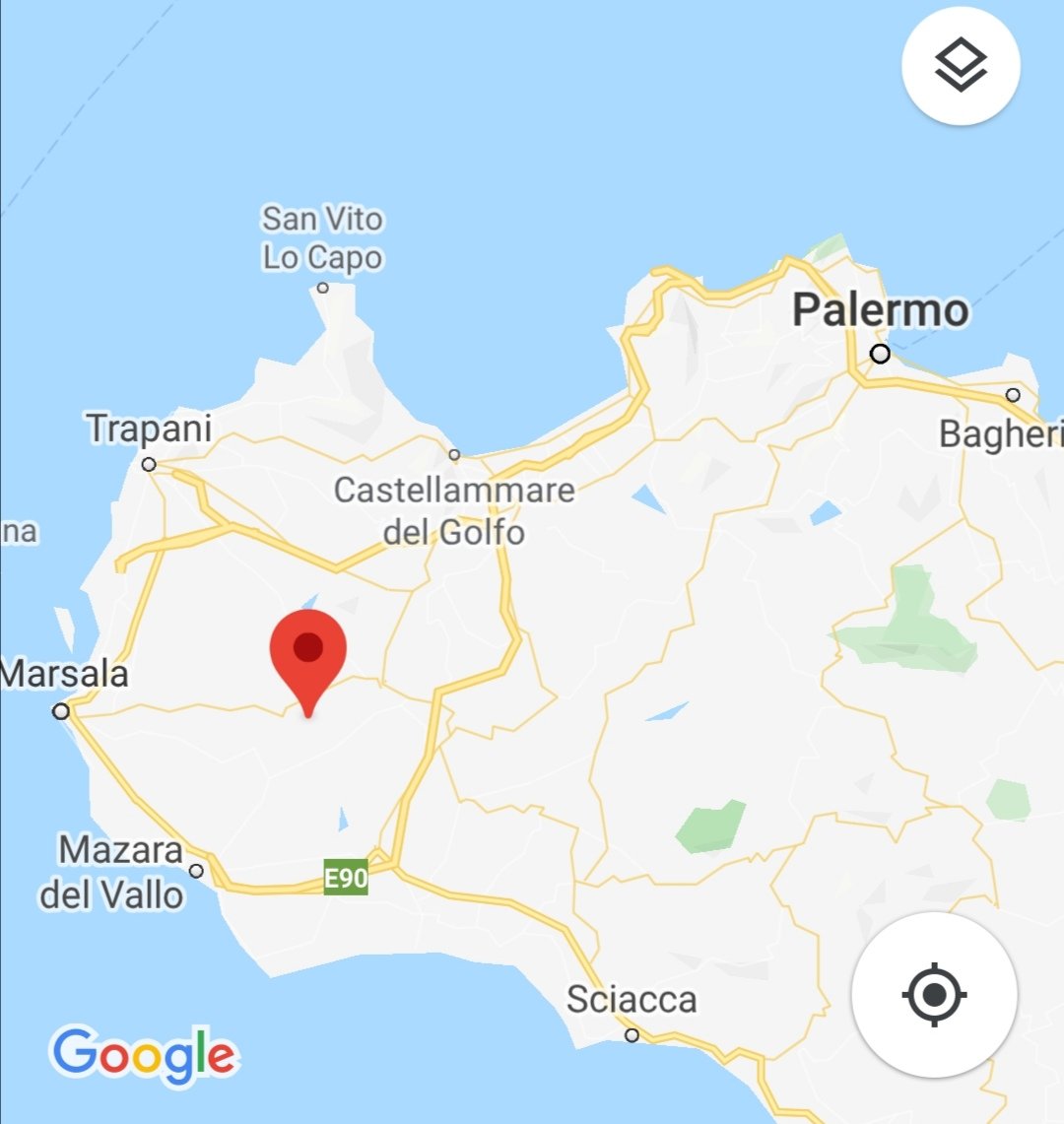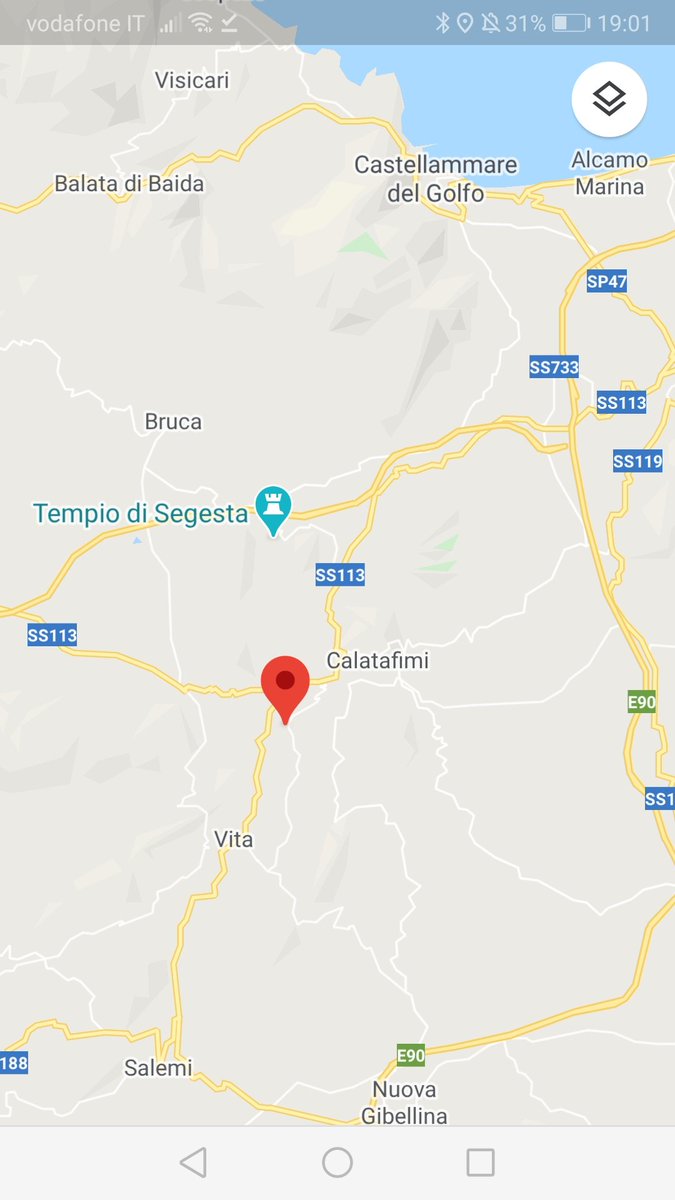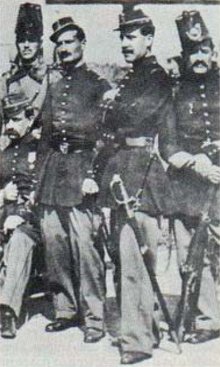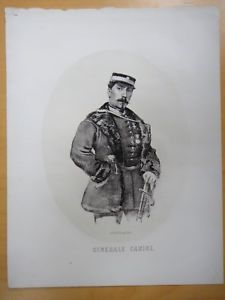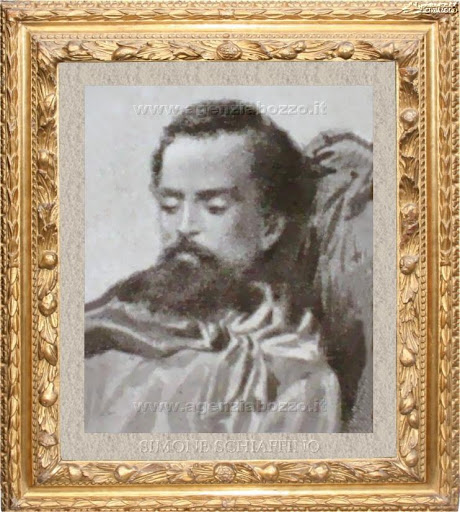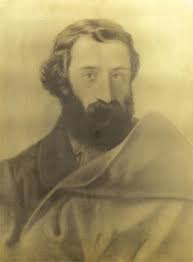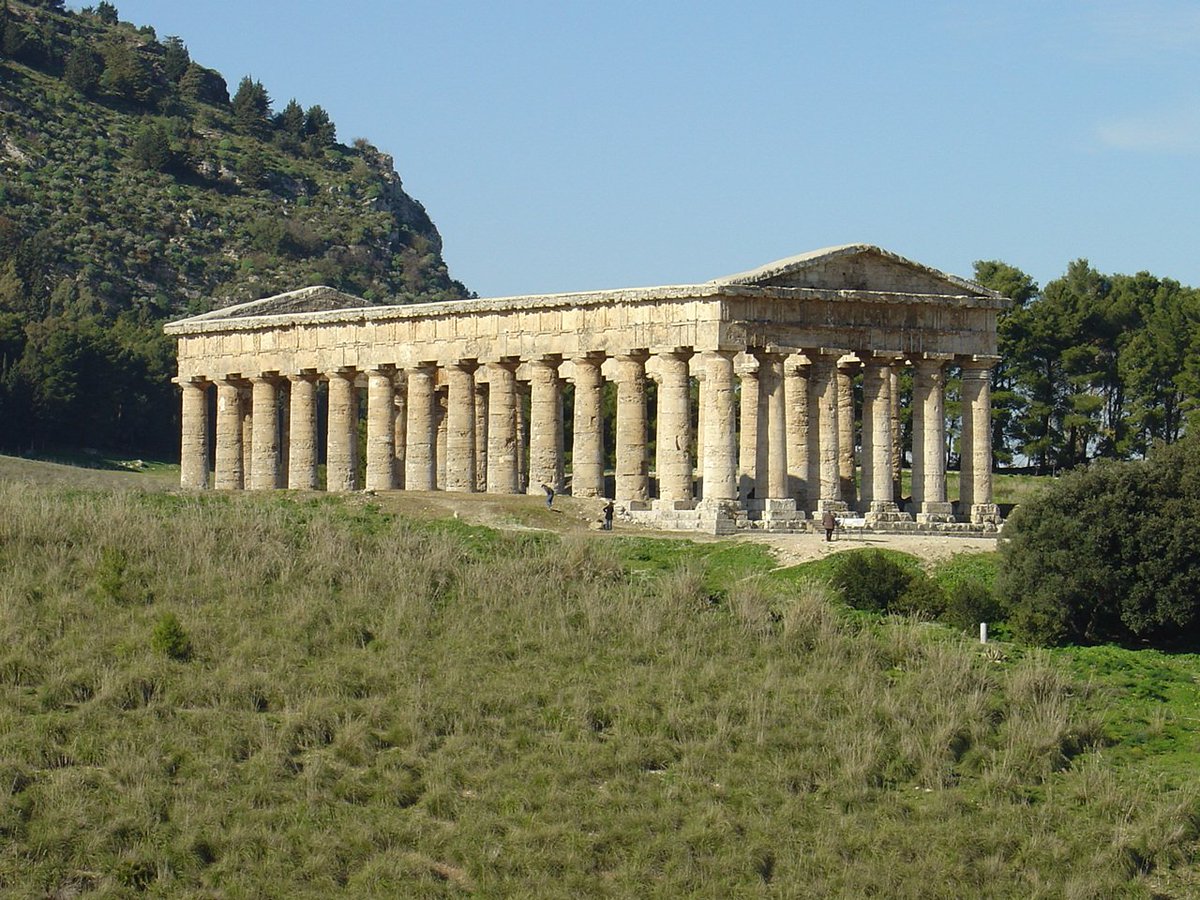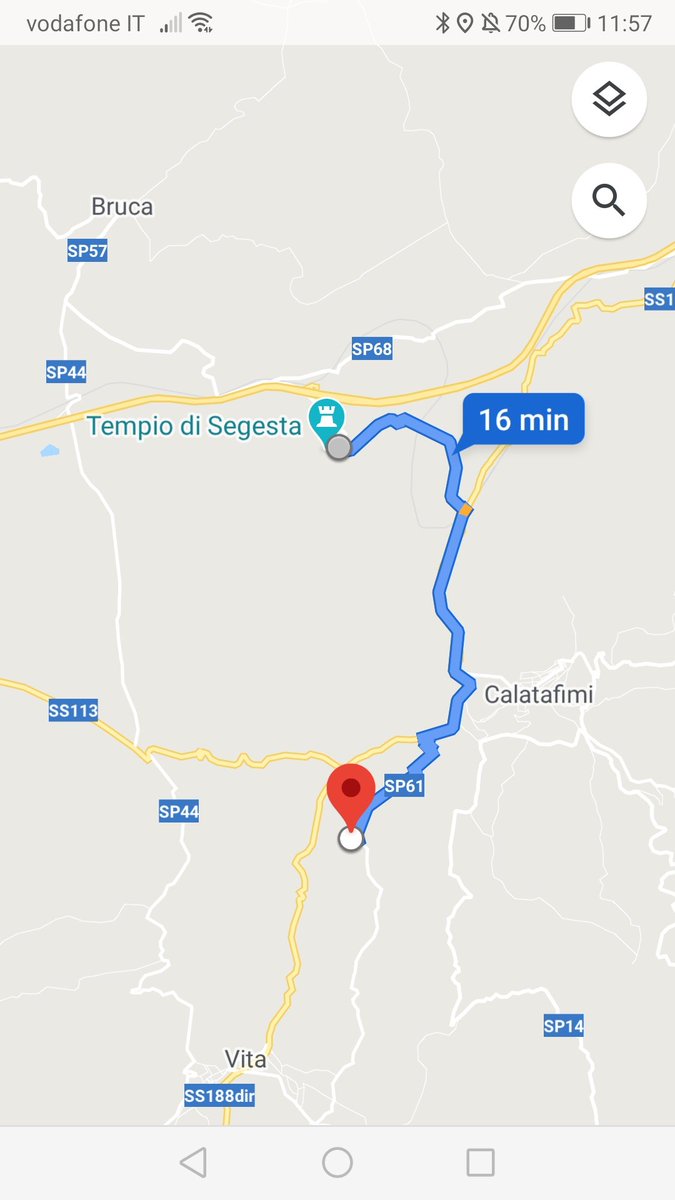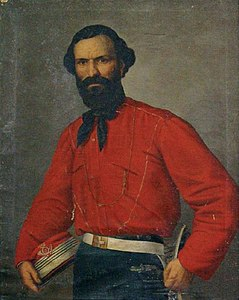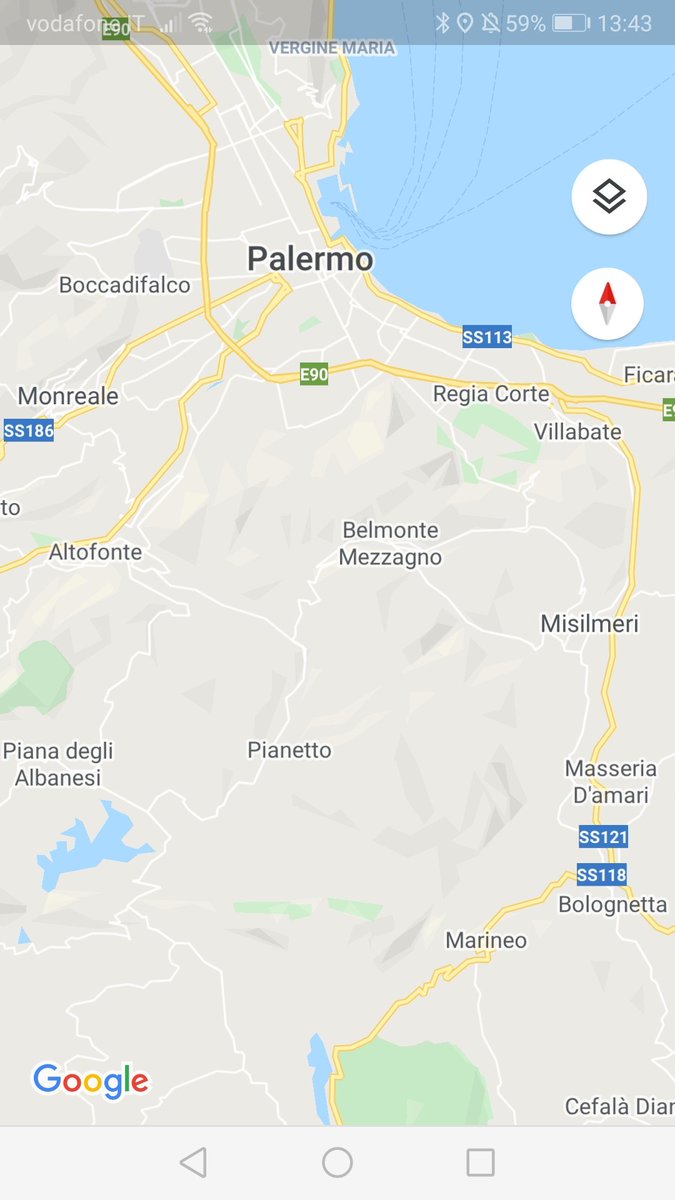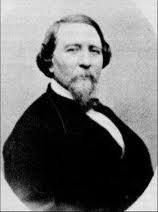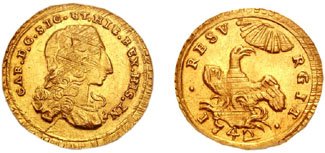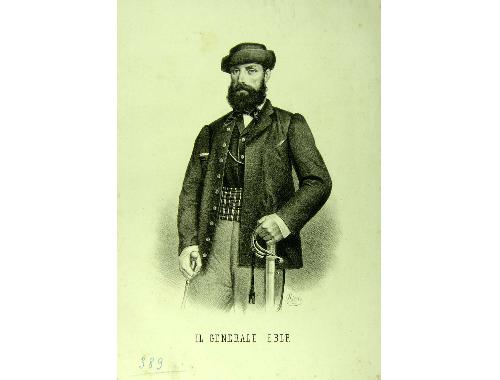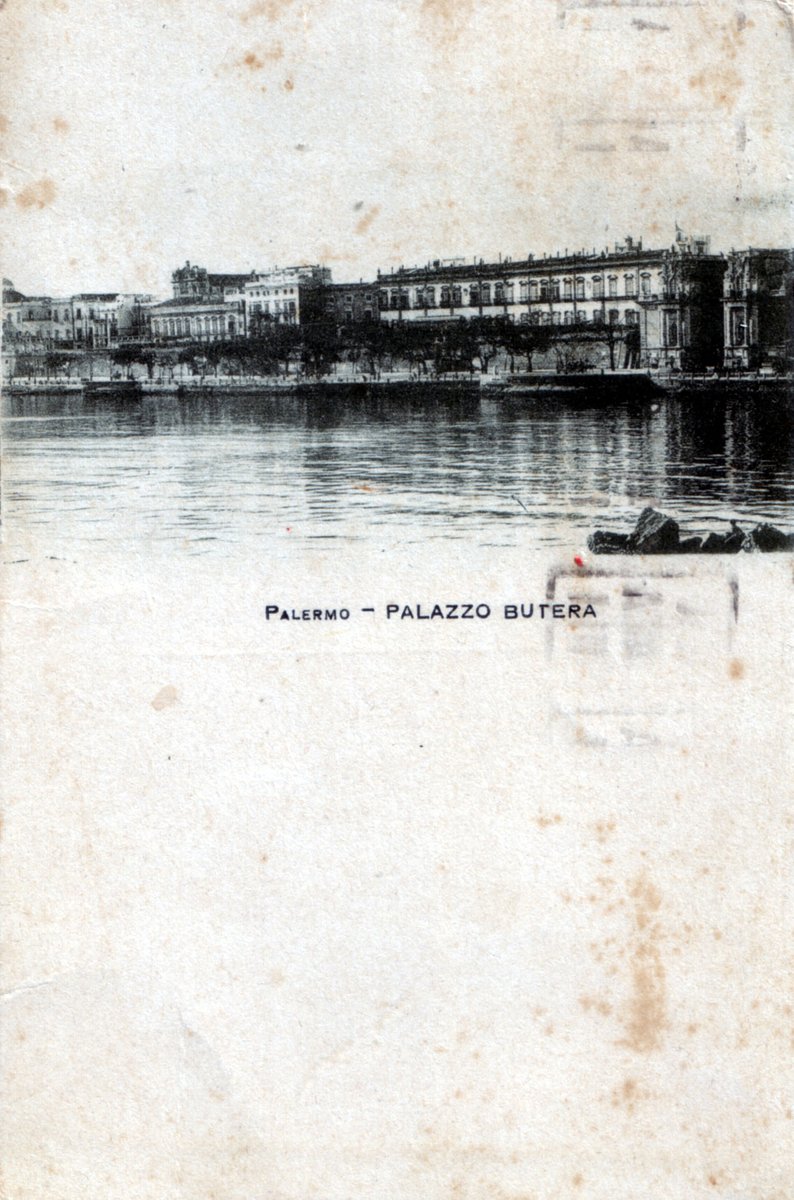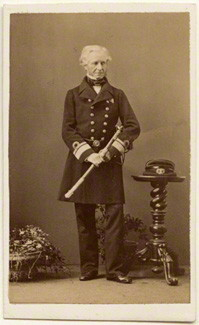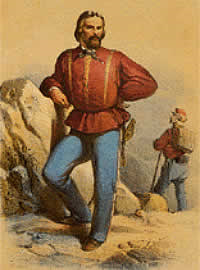From tomorrow, I will be doing a thread following Giuseppe Garibaldi& #39;s "Spedizione dei Mille" (Expedition of the Thousand) to conquer Sicily and southern Italy (Kingdom of the Two Sicilies), as part of the campaign to unify Italy, which set off on 5 May 1860 >>
In 1847, Austrian diplomat Klemens von Metternich famously said Italy was only a "geographical expression" and, looking at a map of the peninsula at the time, you can see what he meant. Metternich died in 1859, so he never got to see how Garibaldi and others proved him wrong >> 1
Metternich had underestimated the strength of Italian national identity and patriotic feeling, embodied by figures such as Garibaldi, Giuseppe Mazzini (photo, left) and Camillo Cavour (photo, right), very different personalities, often in disagreement, but with similar goals >> 2
"Patriots" who fought to defend their country, liberate it or help it gain independence are celebrated everywhere but it is rare to find figures, such as Garibaldi, who more or less "created" or "built" a country that was previously just a "geographical expression" >> 3
We are dealing with the & #39;Spedizione dei Mille& #39;, just one, albeit vital episode in the & #39;Risorgimento& #39;, the process of Italian Unification. There isn& #39;t space to cover the whole process but we need a little context to understand the background to Garibaldi& #39;s expedition >> 4
I will boldly attempt to reduce preceding events to a manageable series of tweets, so sorry for the gross oversimplification.
There had been 3 distinct periods leading up to Garibaldi& #39;s 1860 expedition: First and Second Italian Wars of Independence and the intervening decade >> 5
There had been 3 distinct periods leading up to Garibaldi& #39;s 1860 expedition: First and Second Italian Wars of Independence and the intervening decade >> 5
The main parties in conflict in the First Italian War of Independence 1848-49 were:
1. Kingdom of Sardinia, which, despite its name, also included present day north-western Italy (see map), as well as Savoy & Nice in present day France (Garibaldi was born in Nice in 1807) >> 6
1. Kingdom of Sardinia, which, despite its name, also included present day north-western Italy (see map), as well as Savoy & Nice in present day France (Garibaldi was born in Nice in 1807) >> 6
2. Kingdom of Lombardy-Venetia (see map above), covering rest of northern Italy, which was a crown land of the Austrian Empire.
The Kingdom of Sardinia received (somewhat half-hearted) support from all the other Italian states in its attempt to eject the Austrians from Italy >> 7
The Kingdom of Sardinia received (somewhat half-hearted) support from all the other Italian states in its attempt to eject the Austrians from Italy >> 7
There were 2 main military campaigns during the war, one in 1848 & the other in 1849. In both cases the Kingdom of Sardinia attacked the Austrians & in both cases the Austrians were victorious. The key battles were the Battle of Custoza (1848) & the Battle of Novara (1849) >> 8
Apart from formal military campaigns by organised armies, there were popular uprisings against the Austrians, notably in Milan (which signalled outbreak of war) and in Venice, where the & #39;Republic of San Marco& #39; was declared. The city held out from March 1848 to August 1849 >> 9
While these uprisings helped the Kingdom of Sardinia in its campaign against the Austrians, similar popular uprisings in other parts of Italy led to other Italian states withdrawing their support as they needed troops to keep order on their own territory >> 10
Another important popular uprising was the one instigated by Giuseppe Mazzini in Rome. This led to Pope Pius IX fleeing to Gaeta and the establishment of the so called & #39;Roman Republic& #39; led by Mazzini, with Aurelio Saffi (photo, left) & Carlo Armellini (photo, right) >> 11
The Republic lasted just over 3 months but, during that time, Garibaldi distinguished himself in the defence of the city from attacks by superior French forces, sent by Napoleon III with the aim of restoring Papal power, although Rome was forced to surrender on 1st July >> 12
Another famous patriot participating in defence of Rome was Goffredo Mameli, who composed the Italian national anthem, "Il Canto degli Italiani" (link). Mameli was wounded in battle on 3 June and died a month later >> 13 https://youtu.be/nfrnIs8Ak2Q ">https://youtu.be/nfrnIs8Ak...
The decade between 1st & 2nd Italian Wars of Independence was a period of growing disquiet with Austrian rule in northern Italy, while Cavour, who became PM in Kingdom of Sardinia in 1852, patiently built international alliances, pushing the idea of a unified Italian state >> 14
The Second Italian War of Independence (1859) was a similar to the First in that the Kingdom of Sardinia attacked the Austrians with the aim of liberating Lombardy-Venetia. This time, however, there was a differenze: Cavour& #39;s diplomacy meant they now had support of France >> 15
French support was so decisive that victory was achieved in less than 3 months. Indeed, the French sought peace early because they were afraid of giving too much impetus to the Italian cause, thus threatening the security of the Papal States >> 16
Garibaldi, never one to miss the chance of fighting for his cause, formed a Volunteer Brigade called the & #39;Cacciatori delle Alpi& #39;, playing a decisive role in liberating Como, Bergamo & Brescia. Many veterans of this Brigade would take part in the & #39;Spedizione dei Mille& #39; >> 17
As the War ended early, Lombardy had been liberated but Venetia remained under Austrian control while, in return for French support, Savoy & Nice (despite Garibaldi& #39;s fury) were returned to France. The strengthened Kingdom of Sardinia also occupied Emilia Romagna & Tuscany >> 18
Thus, when Garibaldi set off on his expedition in the night between 5th and 6th May 1860, the map of Italy looked like the one below. The Austrian occupied territory in the north-east would be liberated later. The aim now was to conquer Sicily & the south >> 19
Once the Kingdom of the Two Sicilies was defeated, what was left of the Papal States would come under pressure. Neither of these countries was in a strong position, with popular pressure for change coming from below and a ruling class unable to cope with social upheaval >>20
Having set the scenario with a scandously simplified description of leading up to the & #39;Spedizione dei Mille& #39;, from tomorrow we will follow Garibaldi& #39;s expedition and campaign in more detail, starting with his departure from Quarto (now part of the city of Genoa, see map) >>21
Garibaldi himself was not initially in favour of attacking the Kingdom of the Two Sicilies, preferring the idea of a campaign against the Papal States, with a final & #39;march on Rome& #39;. He considered this less risky than a sea crossing with the chance of being intercepted >> 22
He had already started organising his attack on the Papal States with Giacomo Medici (left) & Nino Bixio (right) heading 1,000 volunteers. He desisted when King Victor Emanuel II of Sardinia expressed fear that such an attack would provoke French & Austrian interventi in >> 23
It is thought that Francesco Crispi (photo) played an important part in convincing Garibaldi to go ahead with the expedition in Sicily. Crispi had been at the head of the revolt in Palermo in 1848, which led to the Kingdom of Sicily breaking away from rule from Naples >> 24
That revolt was put down in 1849 & Sicily returned to Bourbon rule as part of Kingdom of the Two Sicilies but underlying resentment among the population could be exploited by Garibaldi. Indeed, on 4 April 1860 a revolt broke out in Palermo, coordinated by Crispi from Genoa >> 25
This revolt was put down quickly and the leaders executed. Garibaldi had initially planned to set sail on 28 April but, when news of this failed revolt reached Genoa in a ciphered telegram on 27 April, he abandoned the departure, much to the chagrin of his supporters >> 26
Supporters of Mazzini, no longer on good terms with Garibaldi following the end of the Roman Republic, accused him of cowardice. Nino Bixio offered to lead the expedition but Crispi knew that Garibaldi was better suited to command >> 27
Crispi told Garibaldi he had made a mistake in deciphering the telegram and provided him with a new false version that gave more positive news. Thanks to this subterfuge, Garibaldi reversed his decision >> 28
During the night between 5th and 6th May 1860, Nino Bixio and a group of volunteers "stole" two steamships, the & #39;Piemonte& #39; & the & #39;Lombardo& #39; from the port of Genoa. The ships belonged to the Rubattino shipping company and, in reality, the & #39;theft& #39; had been agreed in advance >> 29
Just along the coast, at Quarto, Garibaldi & 1,162 volunteers, boarded the ships. Most were from northern Italy, the biggest group from Bergamo, many being veterans of the & #39;Cacciatori delle Alpi& #39;. The youngest was Giuseppe Marchetti from Chioggia, aged 10 years 8 months >> 30
Cavour was not happy about the expedition, afraid of angering the French, but was in a weak position after infuriating Garibaldi by ceding Savoy & Nice. Although he didn& #39;t block the departure, he complicated things by not allowing the ships to pick up supplies in Sardinia >> 31
The fact that they couldn& #39;t use Sardinian ports left Garibaldi& #39;s ships more vulnerable to interception by the Bourbon navy as they would have to sail closer to the Italian mainland. They needed to stop somewhere to collect supplies of munitions, fresh water and coal >> 32
On 7th May, Garibaldi& #39;s ships called at the port of Talamone (see map). From the Sardinian army fort here, they obtained munitions, around 100 Enfield rifles and 3 old cannons. Numerous soldiers from the fort attempted to board the ships to participate in the expedition >> 33
Garibaldi had given his word to the government of the Kingdom of Sardinia that no regular soldiers would be used in the campaign, only volunteers. Thus, the soldiers were all pushed back, although a few managed to hide away in the hold >> 34
In Talamone, 9 volunteers, supporters of Mazzini & thus Republicans, abandoned the mission after realising they& #39;d be fighting for a united Italy under a monarchy. Garibaldi, though a Republican at heart, knew couldn& #39;t achieve his aim without support from Kingdom of Sardinia >> 35
Also in Talamone, 64 volunteers, led by Callimaco Zambianchi (photo), disembarked and set off on a diversionary mission. Their aim was to provoke uprisings in the Papal States and lead the Bourbon government to believe that Garibaldi was attacking on more than one front >> 36
Zambianchi& #39;s mission was a complete failure. Despite attracting about 200 further volunteers, his group was defeated at Orvieto & forced to retreat. Zambianchi was arrested and, when released, went into exile in Argentina >> 37
Setting off from Talamone, Garibaldi now had 1,089 men at his disposal, the same number that would land in Sicily. The Kingdom of the Two Sicilies had a well equipped army numbering 95,000, of which 25,000 were stationed in Sicily >> 38
After another brief stop in nearby Porto Santo Stefano for coal & fresh water, the ships set sail for Sicily. The voyage passed largely without incident until the night between 10 and 11May, when they were navigating between the islands of Favignana & Marettimo (see map) >> 39
The Bourbon government had ordered 14 ships to sea around western Sicily in an attempt to intercept & capture or sink Garibaldi& #39;s ships before they attempted a landing & here, close to the Egadi Islands, the rebel ships sighted the lights of enemy vessels for the first time >> 40
In order to escape detection Garibaldi, on board the & #39;Piemonte& #39; (picture) , ordered silence and that all lights should be extinguished. The ship had been slowing at that point to allow the & #39;Lombardo& #39;, with Nino Bixio on board, to catch up after being left some way behind >> 41
Thus, the & #39;Lombardo& #39; came suddenly upon the darkened silent shape of the & #39;Piemonte& #39;, mistaking it for an enemy vessel & preparing to open fire & board it. Fortunately, Augusto Elia (photo) at the wheel of the & #39;Lombardo& #39; recognised the bell on the & #39;Piemonte& #39; & warned Bixio >> 42
The actual site of landing in Sicily had not been finally decided before departure. Among places considered were Castellammare del Golfo, Porto Palo near Menfi and Sciacca (see map). Consensus had decided upon Sciacca but this decision was changed on the morning of 11 May >> 43
On the morning of 11 May, Garibaldi& #39;s ships encountered a British sailing ship and a fishing boat, both of which informed them that there were no Bourbon navy vessels in the port of Marsala and, as this was a much more convenient place to land, the plans were changed >> 44
Tomorrow, we will consider the landing itself, in which the British Royal Navy played an indirect, but not insignificant, role. Indeed, Royal Navy ships had been ordered to sail in waters of the Bourbon Kingdom & make frequent calls to its ports for intimidatory purposes >> 45
Just 3 hours before Garibaldi arrived in Marsala, two British Royal Navy warships anchored in the port, the & #39;Argus& #39; & the & #39;Intrepid& #39;. Their presence was not directly linked to Garibaldi& #39;s mission but it would turn out to be providential for its success >> 46
In preparation for the arrival of Garibaldi& #39;s expedition, the Bourbon authorites had been confiscating arms everywhere in the Province of Trapani to avoid them falling into the hands of the rebels or being used by local supporters of his cause >> 47
As part of this, General Letizia had ordered Consuls of foreign nations to hand over any arms they possessed, as well as those held by their citizens. The British Consul in Marsala, Cossins, had refused and Letizia had sent soldiers to forcibly seize the weapons >> 48
This provoked a minor diplomatic incident & Cossins requested Royal Navy warships to protect British citizens & interests in the area. These interests were considerable & revolved around Marsala wine, the production & distribution of which was dominated by British companies >> 49
At around 1.30 p.m. on Friday 11th May 1860, the ships carrying Garibaldi and his 1,089 volunteers entered the port of Marsala. As they had been informed, there were no Bourbon navy vessels in the port, just the two recently arrived British warships >> 50
The & #39;Piemonte& #39;, smaller & more manouevrable, tied up at the jetty. The & #39;Lombardo& #39;, larger & more cumbersome, beached on a sandbank near the lighthouse. This complicated matters as it was carrying most of the supplies & these now had to be ferried ashore in small boats >> 51
While the operation was going on, 3 ships from Kingdom of the Two Sicilies Navy finally caught up with them. They were the & #39;Stromboli& #39;, the & #39;Partenope& #39; (photo) & the & #39;Capri& #39;. They& #39;d been on a wild goose chase off Tunisian coast, amid false rumours Garibaldi had called there >> 52
The Bourbon ships were under the command of the captain of the & #39;Stromboli& #39;, Guglielmo Acton, descended from an Anglo-Italian Catholic family. Unsure of the intentions and possible reactions of the British ships, he did not attack immediately, wasting precious time >> 53
Captain Winnington Ingram of the & #39;Argus& #39; contacted Acton saying many British sailors & officers were ashore & requested him not to open fire until they& #39;d all returned to their ships. Acton consented. When he did open fire on the landing party, the British blocked him again >> 54
Winnington Ingram, Cpt. Maryatt of & #39;Intrepid& #39; & Consul Cossins came aboard & #39;Stromboli& #39; & warned Acton he& #39;d be held responsible for any damage caused to British wine warehouses on the waterfront. & #39;Argus& #39; then weighed anchor & moved closer to the warehouses to protect them >> 55
The half-hearted & often interrupted bombardment continued until sunset but achieved virtually nothing. The disembarkation of men & supplies was completed with minimal casualties (1 killed, 2 wounded). The Bourbon ships had no troops aboard for a landing & assault >> 56
In his memoirs, Garibaldi wrote:
"The presence of the two English warships weighed heavily on the determination of those commanding the enemy ships, naturally eager to strike us, and this gave us time to complete our landing... >> 57
"The presence of the two English warships weighed heavily on the determination of those commanding the enemy ships, naturally eager to strike us, and this gave us time to complete our landing... >> 57
...The noble flag of Albion contributed, once again, to sparing the spillage of human blood; and I, a favourite of those Lords of the Sea, was for the hundredth time their protégé." >> 58
Such praise may arouse the suspicion that the British & #39;knowingly& #39; helped Garibaldi, so he added:
"It was, however, untrue that the English directly assisted the landing with their ships, as our enemies claimed." >> 59
"It was, however, untrue that the English directly assisted the landing with their ships, as our enemies claimed." >> 59
If Garibaldi and his volunteers were expecting to be welcomed as liberators by a joyous population, they were to be disappointed. According to one of Garibaldi& #39;s officers, Giuseppe Bandi (photo),the locals welcomed them, "more or less how dogs are welcomed in church." >> 60
The two ships & #39;Piemonte& #39; & & #39;Lombardo& #39; had both been hit by cannon fire & damaged. The & #39;Piemonte& #39; was taken in tow by & #39;Stromboli& #39; and transferred to Naples, while & #39;Lombardo& #39; was abandoned on the sand bank. Thus, Garibaldi now had no easy means of escape >> 61
Fortunately for Garibaldi, the army of the Kingdom of the Two Sicilies was proving to be as poorly commanded as its navy. On 6 May, troops commanded by General Landi had been stationed in Alcamo (see map), ready to move against any forces landing between Trapani & Marsala >> 62
Then, the day before the Marsala landing, these troops were recalled to Palermo for fear of unrest in the city, leaving Garibaldi& #39;s forces free to move inland with time to organise & attract recruits among the local population. On 12 May, they reached Rampingallo (see map) >> 63
On this first day in Sicily Garibaldi& #39;s forces were strengthened by 200-500 (depending on the version) volunteers recruited by the brothers Stefano, Benedetto & Giuseppe Triplo (the latter being Baron Sant& #39;Anna), who had supported uprisings in Palermo in 1848 & April 1860 >> 64
Garibaldi spent 13 & 14 May in Salemi organising his forces into 2 battalions, one commanded by Bixio, the other by Giacinto Carini, with a total of 9 Companies. The Commander of the 4th Company, Giuseppe La Masa (photo) set out to recruit Sicilian volunteers >> 65
On 14 May, in Salemi, Garibaldi declared himself & #39;Dictator& #39; of Sicily in the name of King Victor Emanuel II. The declaration was actually written by Francesco Crispi & is the first document in which the King is referred to as & #39;King of Italy& #39;. The text was as follows: >> 66
"Giuseppe Garibaldi, commander in chief of the national army in Sicily: at the invitation of leading citizens and of the free municipalities of the island; considering that in time of war it is necessary for civil and military powers to be concentrated in the same hands: >> 67
DECREES that he takes on, in the name of Victor Emanuel King of Italy, the dictatorship of Sicily.
Salemi 14 May 1860. Giuseppe Garibaldi." (photo)
The whole Expedition of the Thousand took place under the motto "Italy and Victor Emanuel" >> 68
Salemi 14 May 1860. Giuseppe Garibaldi." (photo)
The whole Expedition of the Thousand took place under the motto "Italy and Victor Emanuel" >> 68
At dawn the next day, 15 May, Garibaldi ordered his troops to advance towards the village of Vita. Shortly after arriving there, the first battle of the campaign would take place at a locality called Pianto Romano, just outside the town of Calatafimi (see map) >> 69
Garibaldi& #39;s forces reached Vita at around 10 a.m. and remained there until noon while the terrain ahead was scouted. Then they moved out and reached the edge of the valley known as & #39;Pianto Romano& #39; (see photo) and Garibaldi deployed his troops >> 70
In addition to 1,089 men who landed in Marsala (minus some affected by illness), Garibaldi had 1,000 to 1,500 Sicilian volunteers at his disposal. However, arms (mostly old & #39;Brown Bess& #39; muskets) and munitions were in short supply (most men had only 10 to 15 cartridges each) >> 71
Thus, Garibaldi was reluctant to issue weapons to new Sicilian volunteers who were untrained and unreliable. Indeed, when the battle commenced, many deserted or just stood by & watched. It is estimated that only 150 took a full & active part in the fighting >> 72
While the core of Garibaldi& #39;s forces were experienced troops from the & #39;Cacciatori delle Alpi& #39;, who fought in the Second Italian War of Independence, many were young patriots & students who volunteered for the Expedition & had received only very elementary training >> 73
Nonetheless, Garibaldi& #39;s officers were experienced in commanding irregular troops without formal military training, even in combat against regular well trained forces. This leadership was to prove vital, just as poor leadership on the other side played its part >> 74
The Kingdom of the Two Sicilies troops under the command of 68 year old General Landi were well trained & well equipped but lacked real combat experience. They had mostly been engaged in & #39;policing& #39; operations against bandit groups or popular uprisings >> 75
Most of the Bourbon troops, and a good number of officers, believed their government& #39;s propaganda that Garibaldi& #39;s forces were just a group of irregular bandita and, being poorly organised, could easily be overcome >> 76
General Landi made the serious mistake of splitting his 3,000 men into five groups, one sent towards Vita, one held in reserve in Calatafimi, and three others sent to scour the countryside around Calatafimi searching for groups of & #39;bandits& #39; >> 77
As a result, the only column of Bourbon troops to come into contact with Garibaldi& #39;s men was the one sent towards Vita led by Major Sforza, numbering 600, mostly infantry known as & #39;Cacciatori Napoletani& #39; (see photo) >> 78
When Sforza& #39;s column sighted the opposing forces, they halted to consider their options. Despite paintings of the battle (e.g. by Legat in photo) showing Garibaldi& #39;s men in their famous & distinctive & #39;red shirts& #39;, at this early stage of the campaign very few used them >> 79
Thus, most of the forces facing the Bourbons were dressed in civilians clothes and Garibaldi, experienced in leading irregular troops against traditional armies, had ensured that his best combatants remained hidden from view >> 80
Thus, after waiting 2 hours, Sforza reached the conclusion that he was facing unprofessional, disorganised rebels who could easily be dispersed. He ordered the & #39;Cacciatori Napoletani& #39; to advance against the enemy. They were surprised to be met by controlled accurate gunfire >>81
Their advance was halted but, as we have mentioned before, Garibaldi& #39;s troops had limited munitions and were being faced by only a small part of enemy forces, so Nino Bixio gave the order to prepare to retreat if the attack was renewed with vigour >> 82
According to legend, Garibaldi now intervened, telling Bixio, "Nino, here we create Italy or die!" In reality, this was probably just a piece of propaganda created after the event. However, Garibaldi did order a bayonet charge using the words, "Italians, we must die here." >> 83
This charge was a last desperate attempt to stop the advance of the & #39;Cacciatori Napoletani& #39; & Garibaldi took part in it personally. He was saved from wounding by Augusto Elia (see tweet 42), who threw himself in front of an enemy soldier taking aim at Garibaldi >> 84
Elia received a face wound but survived & recovered. The bayonet charge stopped the advance but Bourbon forces were still in a good position & had forced their enemy to use bayonets due to lack of munitions. All they needed to do was press home their advantage >> 85
Much to Garibaldi& #39;s astonishment, however, Bourbon troops began to retreat. He was so surprised that he did not order his men to pursue, fearing a trap. By the time he had the 6th Company, under Giacinto Carini (photo), advance most of the enemy were on the road to Alcamo >> 86
Why did the Bourbon army retreat when in a strong position? First, General Landi was continually afraid of popular uprisings or unrest. His men had seen that Garibaldi had local recruits among his forces and this made a great impression on them >> 87
Although only 150 or so local volunteers had taken an active part in the battle, about 800 stood on a hilltop overlooking the battlefield, firing shots in the air & hurling abuse at the Bourbon soldiers. Landi feared a general uprising could cut his supply lines to Palermo >> 88
Second, they simply didn& #39;t expect such strong resistance from people described as & #39;bandits& #39;. They completely underestimated their enemy& #39;s commitment to a cause. Put simply, Garibaldi& #39;s men& #39;s motivation to fight & die was much greater than theirs >> 89
In military terms, the Battle of Calatafimi was little more than a skirmish but had significant consequences for morale. Garibaldi& #39;s men were naturally elated at their victory against the odds, while Bourbon troops were dispirited by the inept leadership of their officers >> 90
The Bourbon casualties from the 4-hour battle were 35 dead & 118 wounded. Many wounded were abandoned in the church in Calatafimi & treated by Garibaldi& #39;s doctors. He personally guaranteed their freedom to return home, rejoin their comrades or enlist with his forces >> 91
Garibaldi& #39;s casualties amounted to 33 dead and 174 wounded. Two of the dead were personal friends of Garibaldi: Simone Schiaffino (photo, left) and Francesco Montanari (photo, right) >> 92
There was a tragic epilogue to the Battle of Calatafimi on the evening of the following day, 16th May 1860. The retreat of the Bourbon troops towards Palermo was proving to be as disorganised as their performance in battle the previous day >> 93
General Landi had been worried about supply lines but did not think about supplies for his retreating troops. Carts carrying food overtook the foot soldiers heading for Palermo, leaving them behind and hungry. Word of their defeat had spread & locals were becoming hostile >> 94
The mixture of hunger & hostility led to numerous episodes of soldiers looting food, killing people who opposed them or burning down their houses. In the town of Partinico, about 50km west of Palermo, the 20,000 inhabitants prepared to defend themselves from any looting >> 95
When the Bourbon soldiers arrived in the town the inhabitants, locked in their houses, opened fire on them from their windows. The troops responded, broke into the houses, setting 60 of them on fire and killing an unknown number of people, including women & children >> 96
Infuriated by these actions, the population attacked the soldiers with even greater violence and, tired & dispirited from their retreat, those who could fled towards Palermo. They left behind ambulances with the wounded & others who had become cut off from the main force >> 97
The crowds were now out of control and they inflicted horrendous mutilations on the remaining soldiers, throwing their bodies into the burning houses. A total of 40 Bourbon soldiers were killed & 15 taken prisoner to be handed over to Garibaldi& #39;s forces when they arrived >> 98
Garibaldi and his men arrived 2 days later, on 18 May, and found horrific scenes. Mutilated & burnt bodies of Bourbon soldiers left lying to rot. Garibaldi wrote, "We found the bodies of Bourbon soldiers in the streets devoured by dogs... >> 99
...They were bodies of Italians slaughtered by Italians who, if they had been left to live as free citizens, could have usefully served the cause of their oppressed country, instead...they were torn to pieces by their own countrymen with a rage that would horrify hyenas." >> 100
The site of the Battle of Calatafimi is a bit & #39;in the middle of nowhere& #39; but if you visit the lovely Greek temple (photo) & theatre at Segesta, it& #39;s worth a short drive (see map) along the winding Sicilian roads to visit the monument (photo) holding remains of the fallen >> 101
Following the Battle of Calatafimi & retreat of the Bourbon forces, the next challenge for Garibaldi was to attack Palermo. This would not be a simple task. Garibaldi had just over 900 men from those who had landed in Marsala & a few thousand untrained Sicilian volunteers >> 102
In Palermo, the Bourbons had 21,000 men, regular troops, well supplied & with solid defensive positions. It was clear that the city could not be conquered by a traditional military attack. An uprising among the local population would be needed to support Garibaldi& #39;s forces >> 103
An initial skirmish near Monreale on 21 May 1860 saw Sicilian volunteer forces, commanded by Rosolino Pilo (photo, left) & Giovanni Corrao (photo, right) defeated by 3,000 foreign mercenaries under Colonel Von Mechel, with Pilo being killed. This forced Garibaldi to retreat >>104
From Monreale, Garibaldi moved first to Altofonte (see map) and then Piana degli Albanesi (inappropriately known as Piano dei Greci at that time, as it is home to a population of Albanian origin). This gave the impression he was avoiding Palermo & moving inland >> 105
Garibaldi& #39;s moves were shadowed by Von Melchen. After dark, on 24 May, Garibaldi moved out of Piana degli Albanesi, heading for Marineo but, on the way, he divided his forces. 150 men, led by Vincenzo Giordano Orsini, with the wounded & artillery continued towards Corleone >> 106
The remaining 750 or so men continued on to Marineo, where they arrived around midday, and then on to Misilmeri (see map), which they reached at about 1 a.m. on 26 May. Here, they were joined by Giuseppe La Masa (photo), who had recruited further Siciliana volunteers >> 107
Garibaldi& #39;s ruse of sending Orsini (photo) towards Corleone paid off, as Von Melchen followed this column, believing it to be the main force. A message was sent to Palermo, and on to Naples, claiming that Garibaldi had been deserted by his Sicilian recruits & was fleeing >> 108
At 4 a.m. on 26 May, Garibaldi held a Council of War with his commanders in Misilmeri to finalise his plans for attacking the city. When it finished, he said to Bixio, "Nino, tomorrow in Palermo", to which Bixio replied, "in Palermo or in hell." >> 109
At 11 a.m. on 26 May, Garibaldi& #39;s men set off, arriving an hour later in Gibilrossa, where La Masa had gathered his Sicilian volunteers. Garibaldi inspected them & promised a reward of 8,000 oncie (photo) for whoever managed to plant the Italian flag on Palermo City Hall >> 110
Incredibly, although the Bourbon army had been unable to catch up with Garibaldi in the mountains around Palermo, British & American & #39;sightseers& #39; found his camp at Misilmeri. Some of them were military officers who provided him with information on the situation in the city >> 111
He was also joined in Misilmeri by Hungarian officer Ferdinand Eber (photo), who was also serving as Times correspondent covering the expedition. Garibaldi was one of the earliest military figures to realise the importance of the press and made Eber a General in his army >> 112
Eber& #39;s first hand accounts of the expedition helped make Garibaldi a legendary figure in Britain. When he visited England in 1864, it is thought 500,000 people lined the streets in London to catch a glimpse of him >> 113
At dusk on 26 May 1860, Garibaldi& #39;s forces moved towards the south-eastern edge of Palermo. On reaching Acqua dei Corsari, around 2 a.m., a vanguard was formed of 30 & #39;Cacciatori delle Alpi& #39;, commanded by Hungarian Major Lajos Tüköry (photo), flanked by Sicilian volunteers >> 114
To enter the city, they had to cross the Ammiraglio Bridge & pass through the City Gate, known as Porta Termini. Although total silence had been ordered, as they neared the bridge some of the undisciplined Sicilian volunteers opened fire, removing the element of surprise >> 115
The roughly 200 Bourbon troops guarding the bridge opened fire, causing some of the volunteers to flee. However, the rest of the volunteers and the & #39;Cacciatori delle Alpi& #39; returned fire and, after being reinforced, succeeded in forcing the enemy to abandon the bridge >> 116
After crossing the bridge, Garibaldi& #39;s men were caught in crossfire from Bourbon troops at the Porta Termini and on the Guadagna Bridge. There were numerous casualties, including Tüköry, who was shot in the kneecap. His leg was amputated but he died of gangrene on 6 June >> 117
Garibaldi sent men to attack the Bourbon troops on the Guadagna Bridge and, once they had been overcome, the soldiers at the Porta Termini also withdrew, leaving the way open into the city. Nonetheless, the Gate was subject to fire from a nearby barracks and a warship >> 118
To protect themselves from gunfire, Garibaldi& #39;s men constructed barricades & entered the city in pauses between cannon fire from the warship. Garibaldi himself entered Palermo around 4 a.m. on 27 May. In little more than an hour his forces occupied almost half the city >> 119
Garibaldi& #39;s troops headed straight for Piazza Fieravecchia, symbolically important because it was the site of the outbreak of the 1848 insurrection. The church bells began to ring and the population, seeing the rebels in the city, started to come out onto the streets >> 120
At midday, cannons in the Castello a Mare and the Palazzo Reale, as well as on two warships in the harbour, began bombarding the city indiscriminately. The Bourbon troops had no plan of action and indulged in random acts of killing, arson, rape & looting against civilians >> 121
Admiral Mundy, on board a British ship in the harbour wrote, "a whole district...is in ashes; entire families have been burnt alive in their houses, while the atrocities committed by royal troops are unspeakable." Fighting and the bombardment only died down at nightfall >> 122
While Garibaldi had attacked the city from the south-east, Giovanni Corrao (see tweet 104) attacked from the north-west with his Sicilian volunteers on the afternoon of 27 May. This side of the city was better defended & their attack had been repulsed >> 123
However, a surprise night-time attack proved successful and Corrao& #39;s troops barricaded themselves inside Palazzo Butera (photo) and surrounding streets This effectively cut the Bourbon forces in two, with communication between Palazzo Reale & Castello a Mare interrupted >> 124
Bourbon troops counter-attacked four times but were held back. In order not to be left isolated, the soldiers guarding the Vicaria prison abandoned their posta, allowing the escape of all inmates, including numerous political prisoners, many of whom joined the rebellion >> 125
On the morning of 29 May, Bourbon troops in the Palazzo Reale, running short of food & ammunition, made another attempt to break out and reach their comrades in the Castello a Mare, which was well supplied. Again, they failed, meaning they could not hold out much longer >> 126
Ferdinando Lanza, in charge of the defence of Palermo, had sent out messengers in an attempt to reach Colonel Von Mechel (photo), who had been tricked into following Orsini& #39;s column towards Corleone & beyond, and, on the evening of 29 May, one of these messages reached him >> 127
Von Mechel immediately turned back to Palermo. He commanded 3,000 experienced, well disciplined Swiss and Bavarian mercenaries with cavalry and artillery, so his arrival could tip the balance against Garibaldi in what was becoming a deadlocked situation >> 128
On the morning of 30 May 1860, fighting in the streets of Palermo had generally died down & the Bourbon bombardment of the city had ceased. Lanza asked to meet Garibaldi with the mediation of British Admiral Rodney Mundy (photo) on board HMS Hannibal (photo) in the harbour >> 129
An immediate ceasefire was declared. Meanwhile, however, Von Mechel had arrived. He entered through Porta Termini, as Garibaldi had done 3 days earlier but now, as fighting had moved on to other parts of the city & a ceasefire had just been called, it was almost undefended >> 130
Garibaldi& #39;s Chief of General Staff, Giuseppe Sirtori (photo), moved to block Von Mechel& #39;s attack, being wounded in the process. Nonetheless, Von Mechel& #39;s men succeeded in reaching Piazza Fieravecchia >> 131
Here Garibaldi intervened personally, accompanied by a Bourbon Captain. They informed Von Mechel of the ceasefire, thus bringing the attack to an end. At 2 p.m. Garibaldi & General Letizia met on board HMS Hannibal >> 132
At this meeting, Garibaldi agreed to allow evacuation of the wounded and arrival of food supplies for Bourbon troops. He refused, however, a proposal to request King Ferdinand restore the Constitution of 1812, which gave greater autonomy to Sicily >> 133
In any case, the ceasefire was prolonged to 6 p.m. the next day. When Garibaldi returned to Palazzo delle Aquile (City Hall), he was joined by Bourbon Major Bosco and addressed the crowds waiting for news of the negotiations >> 134
He told the crowds that restoration of the 1812 Constitution had been offered if they wanted It but this would mean he abandoned his expedition & left Sicily. The alternative was war. To this the crowds cried, "war, war!" >> 135
He told the crowds to prepare for resumption of hostilities. Barricades were built in the streets (photo, note huge sheet hung between balconies to prevent Bourbon troops signalling to one another), while Bourbon soldiers prepared a pincer attack to join up their forces >> 136
Lanza, however, had no real appetite for a fight and when he saw the enthusiasm of the population in preparing for battle he asked Garibaldi for an extension of the ceasefire for three days. In the end, it became permanent; effectively, a Bourbon surrender >> 137
On 6 June, an agreement was signed by which Bourbon troops could leave the city with full military honours. The first left on 7 June & evacuation was completed on 19 June. Most of Garibaldi& #39;s Sicilian volunteers returned home & he was left with a few hundred able-bodied men >>138

 Read on Twitter
Read on Twitter